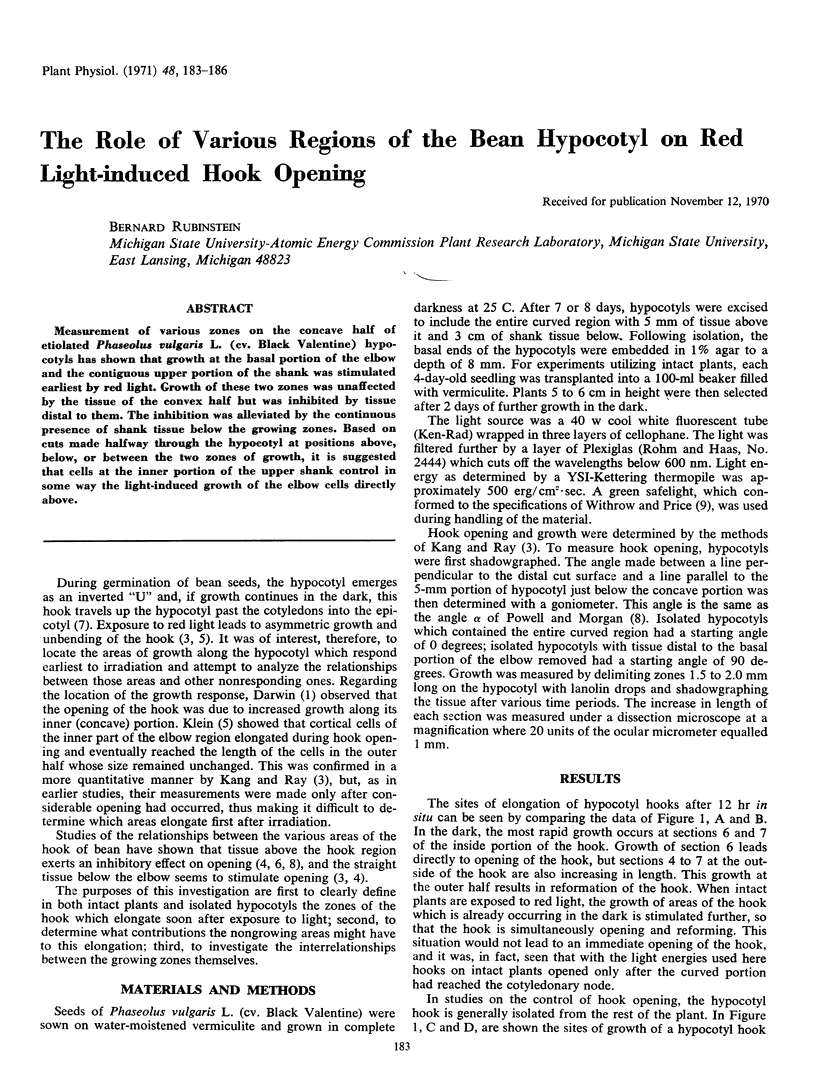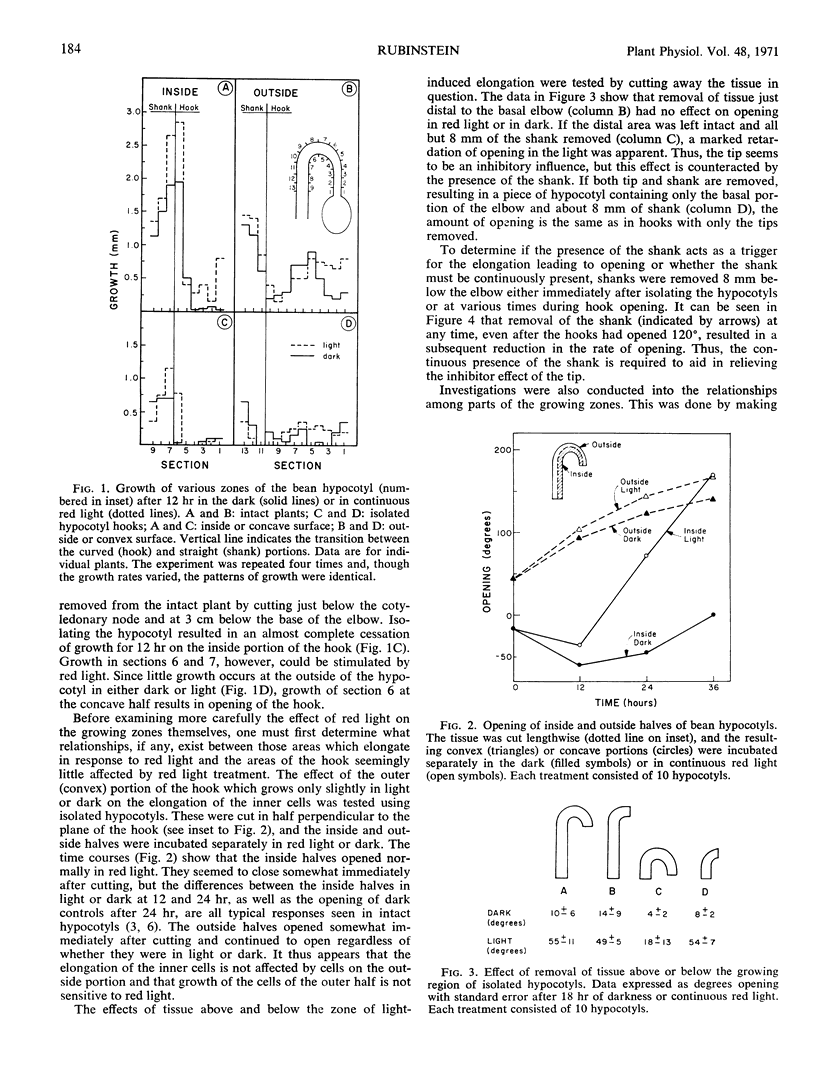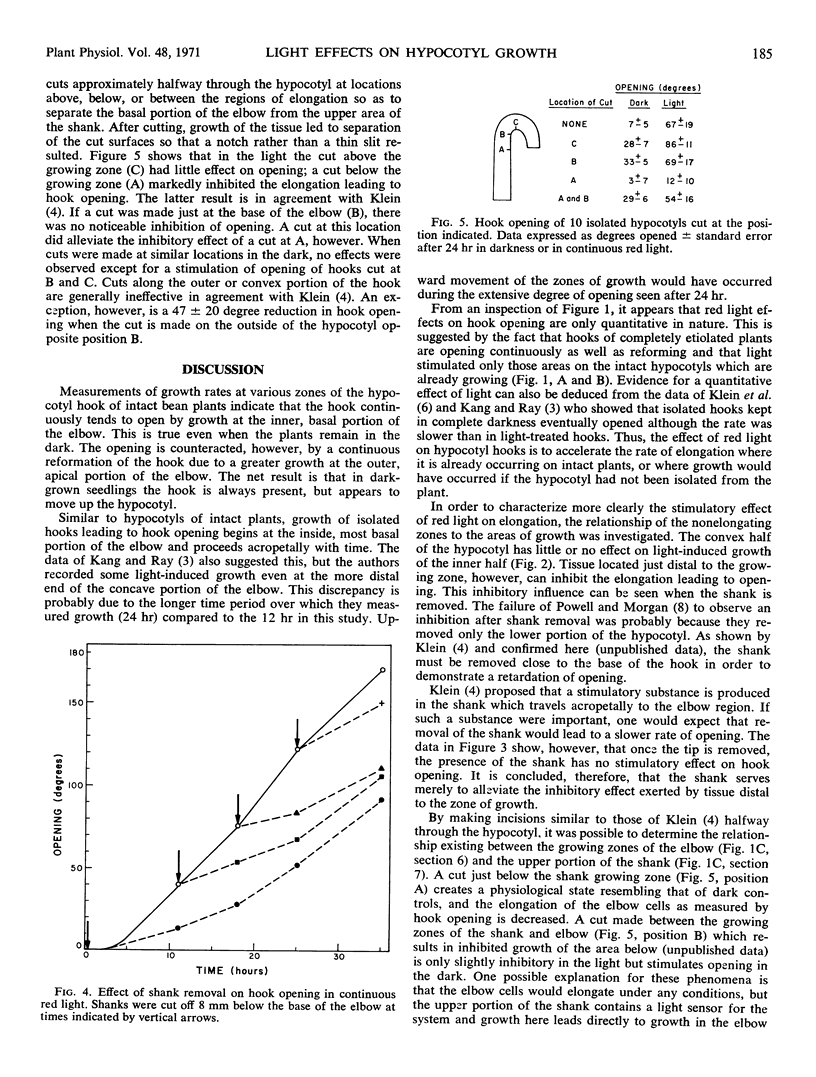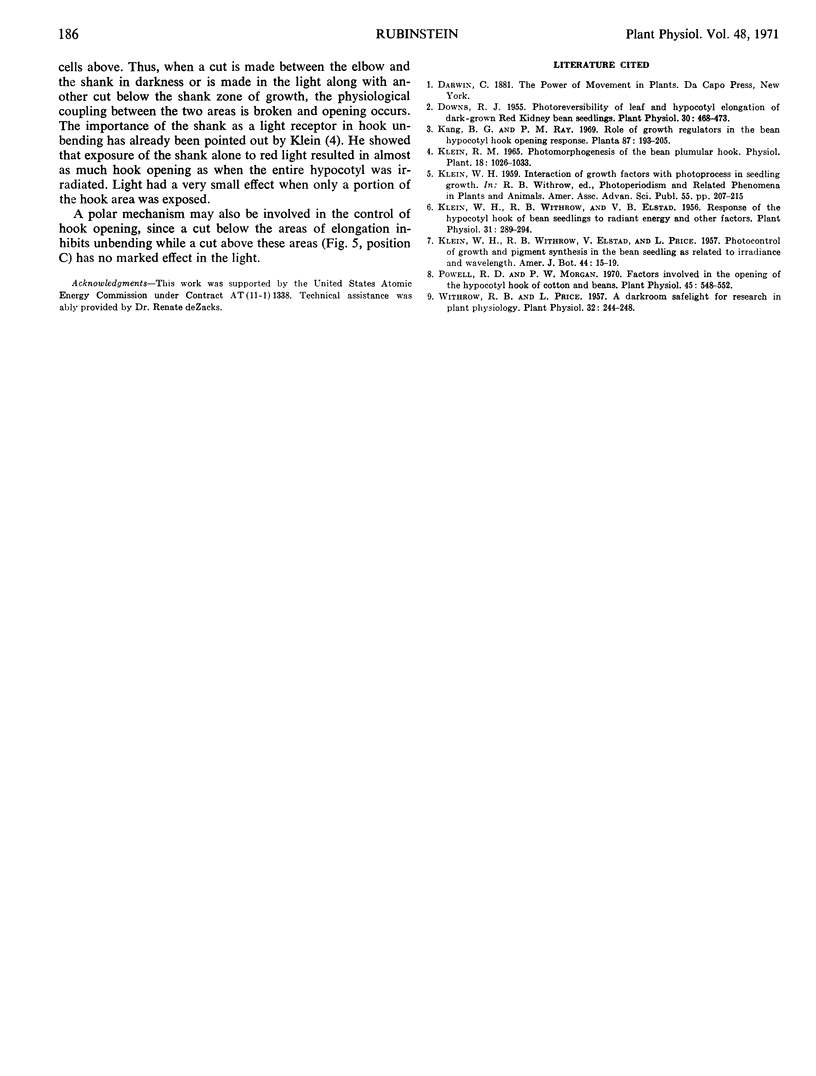Abstract
Measurement of various zones on the concave half of etiolated Phaseolus vulgaris L. (cv. Black Valentine) hypocotyls has shown that growth at the basal portion of the elbow and the contiguous upper portion of the shank was stimulated earliest by red light. Growth of these two zones was unaffected by the tissue of the convex half but was inhibited by tissue distal to them. The inhibition was alleviated by the continuous presence of shank tissue below the growing zones. Based on cuts made halfway through the hypocotyl at positions above, below, or between the two zones of growth, it is suggested that cells at the inner portion of the upper shank control in some way the light-induced growth of the elbow cells directly above.
Full text
PDF



Selected References
These references are in PubMed. This may not be the complete list of references from this article.
- Klein W. H., Withrow R. B., Elstad V. B. Response of the Hypocotyl Hook of Bean Seedlings to Radiant Energy and Other Factors. Plant Physiol. 1956 Jul;31(4):289–294. doi: 10.1104/pp.31.4.289. [DOI] [PMC free article] [PubMed] [Google Scholar]
- Powell R. D., Morgan P. W. Factors involved in the opening of the hypocotyl hook of cotton and beans. Plant Physiol. 1970 May;45(5):548–552. doi: 10.1104/pp.45.5.548. [DOI] [PMC free article] [PubMed] [Google Scholar]
- Withrow R. B., Price L. A Darkroom Safelight for Research in Plant Physiology. Plant Physiol. 1957 May;32(3):244–248. doi: 10.1104/pp.32.3.244. [DOI] [PMC free article] [PubMed] [Google Scholar]


